
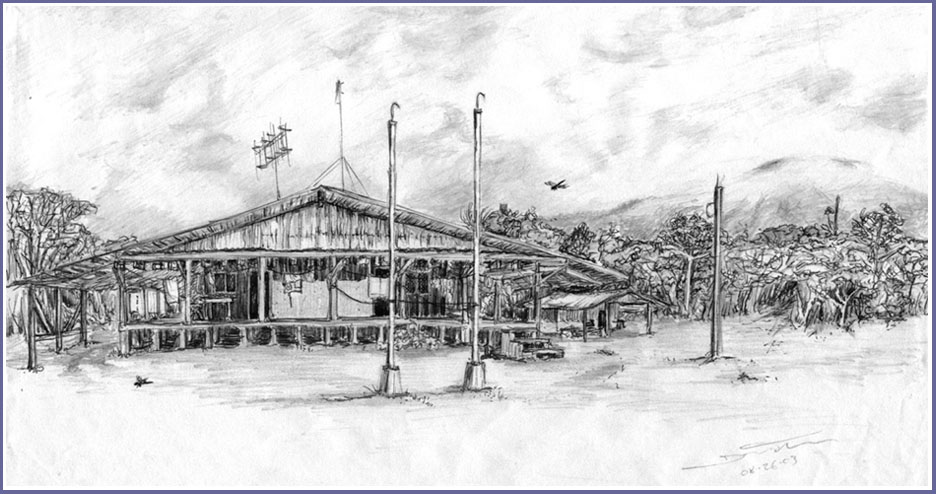
Estacion Biologica Pitilla is a remote biological station in Northwestern Costa Rica at 10°59’N, 85°26’W. Pitilla is located in and administered by the Area de Conservacion Guanacaste (ACG). The ACG incorporates both Santa Rosa National Park and Guanacaste National Park (GNP) into a much larger and continuous conservation area. Pitilla is in the area of the former GNP. It is located 9 km south-west of the village of Santa Cecilia, accessible on a rough mud road by 4-wheel drive vehicles. The station lies on the side of a mountain, in the mid-elevation (700m) tropical rainforest biome, on the interface of primary forest and reclaimed pastureland. From here, a network of trails allows access to the primary and secondary forest as well as open fields. Expect very high humidity and frequent, abrupt rainstorms which will last from 1 minute to 3 days. Temperature is pleasant, around 18 to 28°C. It is often sunny, but sunscreen is only needed if you walk down the exposed road (else the forest provides enough shade). Bring lots of insect repellent, and some anti-itch creme.
The structure itself is a large (30m x 100m) hacienda-style tin-roofed wooden station which consists of the following:
- two dorm rooms, each with 5 bunk beds, one washroom with flush toilet and cold (stream) water shower. The West dorm room has the bonus ammenity of a mirror.
- kitchen with a propane stove, sink and food storage cupboard.
- open work areas.
- living quarters for the park staff.
- horse stable.
- wide verandah around entire station for working.
The station is visited by troupes of Capuchin monkeys, Keel-Billed toucans, tree frogs, the occasional snake, bats, spiders (both resident and transient), and lots and lots of bugs.
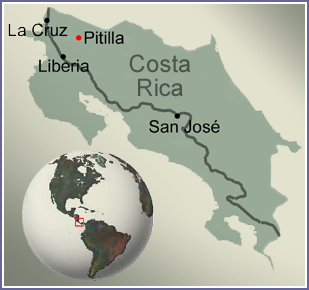
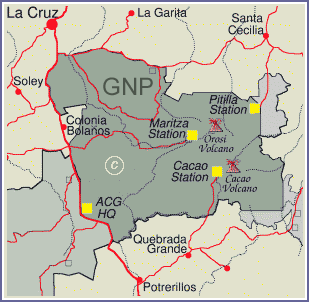
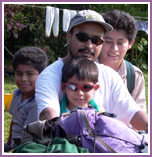 Calixto Moraga and Petrona Rios
Calixto Moraga and Petrona RiosCalixto and Petrona have an extensive knowlege of the flora and fauna around the research station. They are invaluable in helping to identify organisms of interest, and they assist in much of the work being done in the forest. They live in the nearby village of Santa Cecilia with their kids, José Mario (at left) and Jorge Luis (center).
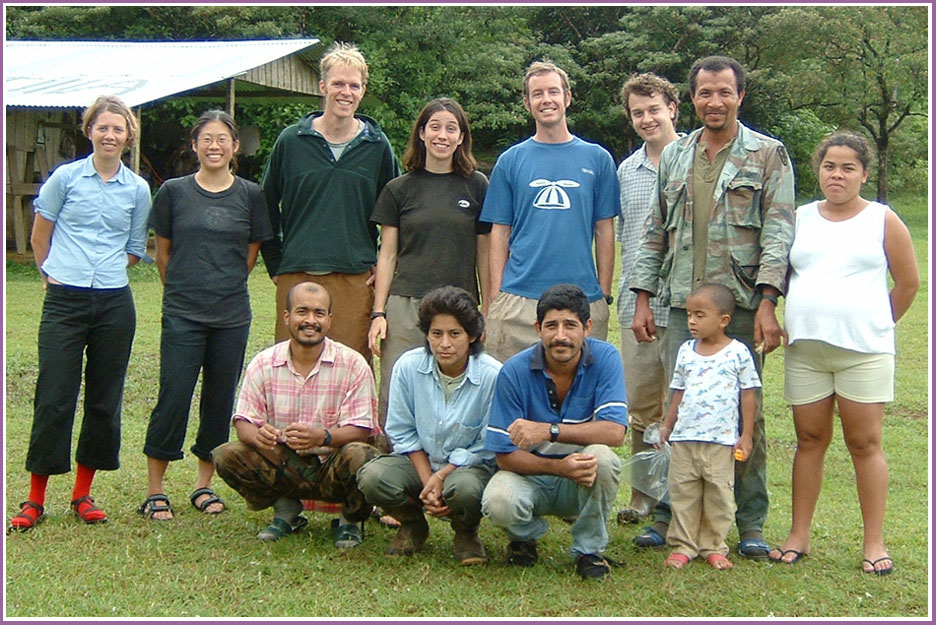 2005 Field Group: Aimee, Jackie, Ben, Kate, Brian, Ross, Esteban, Fatima, Calixto, Petrona, Manuel, Josue
2005 Field Group: Aimee, Jackie, Ben, Kate, Brian, Ross, Esteban, Fatima, Calixto, Petrona, Manuel, Josue


